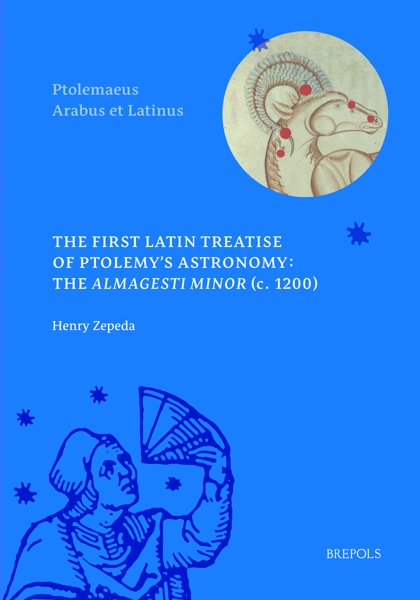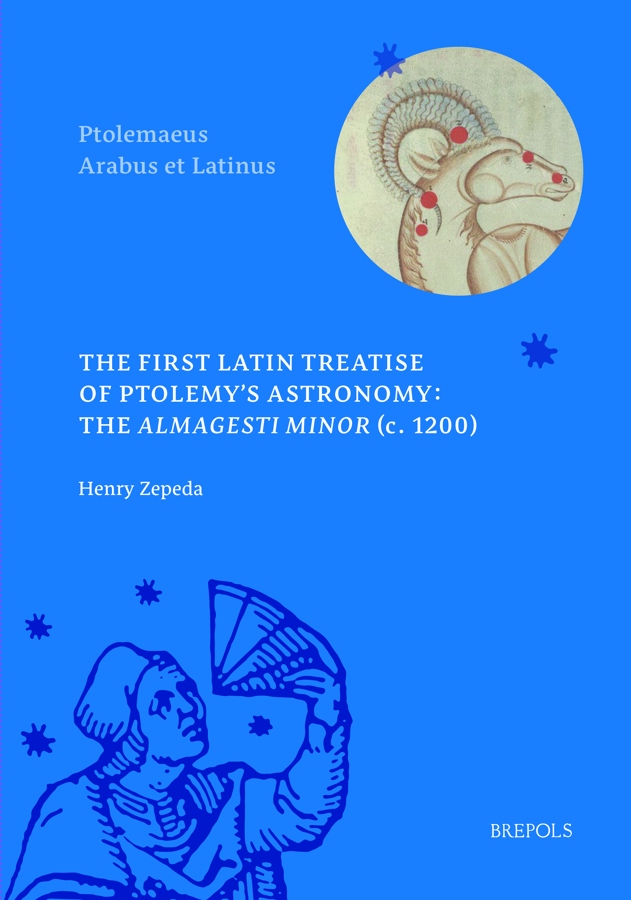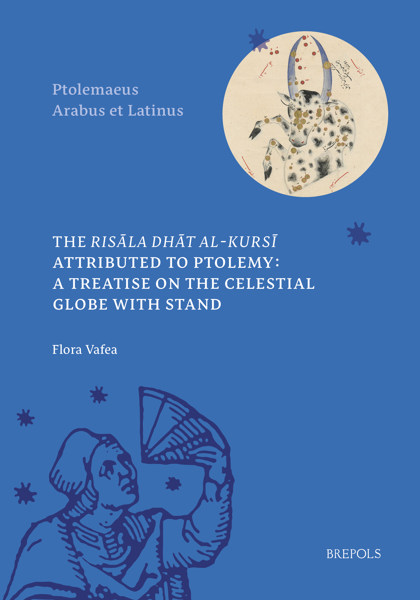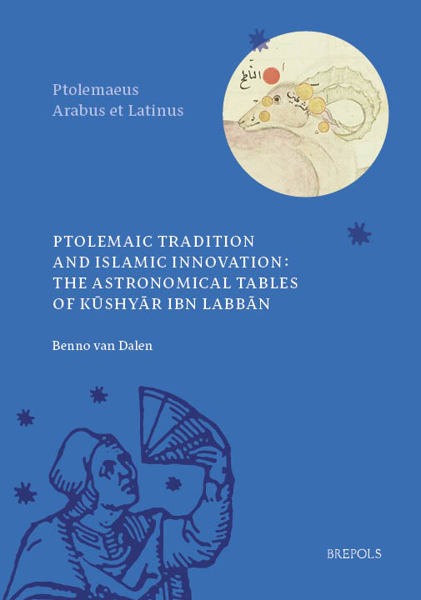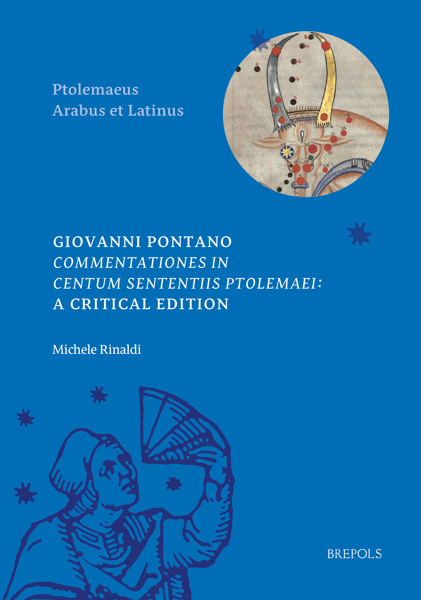
The First Latin Treatise on Ptolemy’s Astronomy: The Almagesti minor (c. 1200)
Henry Zepeda
- Pages: x + 662 p.
- Size:178 x 254 mm
- Illustrations:136 b/w, 12 tables b/w.
- Language(s):English, Latin
- Publication Year:2019
- € 170,00 EXCL. VAT RETAIL PRICE
- ISBN: 978-2-503-58137-8
- Hardback
- Available
This volume presents a critical edition, translation, and study of one of the most important works of medieval science, the Almagesti minor, the earliest Latin commentary on Ptolemy’s Almagest. This summary of the first half of the Almagest incorporated the astronomy of Islamic astronomers and altered Ptolemy’s work to make it accord with the author’s scientific ideals. The Almagesti minor had a profound effect upon astronomical writings throughout the 13th-15th centuries, including the work of Georg Peurbach, Johannes Regiomontanus, and many others.
"The Almagesti minor is one of the most important works of medieval astronomy. (...) In this first volume of the Ptolemaeus Arabus et Latinus text series, Henry Zepeda offers not only a critical edition of this little-studied text, but also a translation into English, analysis of both the text and its geometrical figures, and a thorough study of the work’s origins, sources, and long-lasting influence." (Studi medievali, 60/2, 2019, p. 1073)
"Zepeda's edition of the Almagesti minor is an immense scholarly achievement. It will give future historians an excellent foundation to address the many intriguing questions raised by this text, from its intended purpose (e.g., why did the author only re-model the first six books of the 'Almagest'?) to the nature of its use by later authors." (Philipp Nothaft, in Mitellateinisches Jahrbuch, 54/3, 2019, p. 547-549)
"Ptolemaeus Arabus et Latinus is among the most ambitious and important projects in the study of the history of science. (...) The edition and translation is a very demanding contribution to the history of science for which we must all be grateful. (...) That the Almagesti minor has at last been edited and translated by Henry Zepeda is an accomplishment for which we can all be grateful, and we look forward to the further study and analysis of the work that is now possible." (N. M. Swerdlow, in Journal for the History of Astronomy, 52/1, 2021, p. 104-107)
Henry Zepeda is a historian of science. He is a Teaching Fellow at Wyoming Catholic College, and he previously worked in the Ptolemaeus Arabus et Latinus project at the Bavarian Academy of Sciences and Humanities. His research is focused upon medieval mathematics and astronomy of the 12th to 15th centuries.
The Almagesti minor is one of the most important works of medieval astronomy. Probably written in northern France circa 1200, it is a Latin summary of the first six books of Ptolemy’s astronomical masterpiece, the Almagest. Also known to modern scholars as the “Almagestum parvum”, the Almagesti minor provides a clear example of how a medieval scholar understood Ptolemy’s authoritative writing on cosmology, spherical astronomy, solar theory, lunar theory, and eclipses. The author incorporated the findings of astronomers of the Islamic world, such as al-Battānī, into the framework of Ptolemaic astronomy, and he altered the format and style of Ptolemy’s astronomy in order to make it accord with his own ideals of a mathematical science, which were primarily derived from Euclid’s Elements. The Almagesti minor had a profound effect upon astronomical writing throughout the 13th-15th centuries, including the work of Georg Peurbach and Johannes Regiomontanus. In this first volume of the Ptolemaeus Arabus et Latinus text series, Henry Zepeda offers not only a critical edition of this little-studied text, but also a translation into English, analysis of both the text and its geometrical figures, and a thorough study of the work’s origins, sources, and long-lasting influence.
Part I: Introduction
I.Basic Overview
II.Title, Date, Origin, and Author
III.Euclidean Style
1.Sources
2. Major Changes in Content from the Almagest
3.The Manuscripts
-Manuscript Descriptions
IV.Manuscripts Containing Excerpts of the Almagesti minor
V. Influence of the Almagesti minor
Almagest Manuscripts
John of Sicily’s Scriptum super canones Azarchelis
Commentary in Florence, Biblioteca Riccardiana, 885
The Erfurt Commentary
Richard of Wallingford’s Quadripartitum, De Sectore, and Albion
John of Genoa’s Canones eclipsium
Simon Bredon’s Commentary on the Almagest
Commentary on Geber’s Liber super Almagesti
Bernard Chorner’s Almagesti Ptolomei abbreviatum
Schindel’s Lectures on the Almagest and his Canones pro eclipsibus
John of Gmunden’s Tractatus de sinibus, chordis et arcubus
Paul of Gerresheim’s Expositio
Peurbach and Regiomontanus’ Epitome Almagesti
Albert of Brudzewo’s Commentariolum super theoricas novas planetarum Georgii Purbachii
Epitome of the Almagesti minor
VI. Editing Methods
Part II: Critical Edition and Translation
Part III: Commentary on the Text and Figures
I. Commentary
II. Commentary on the Figures
Appendix (alternate texts and additions)
Glossary
Bibliography
Index
